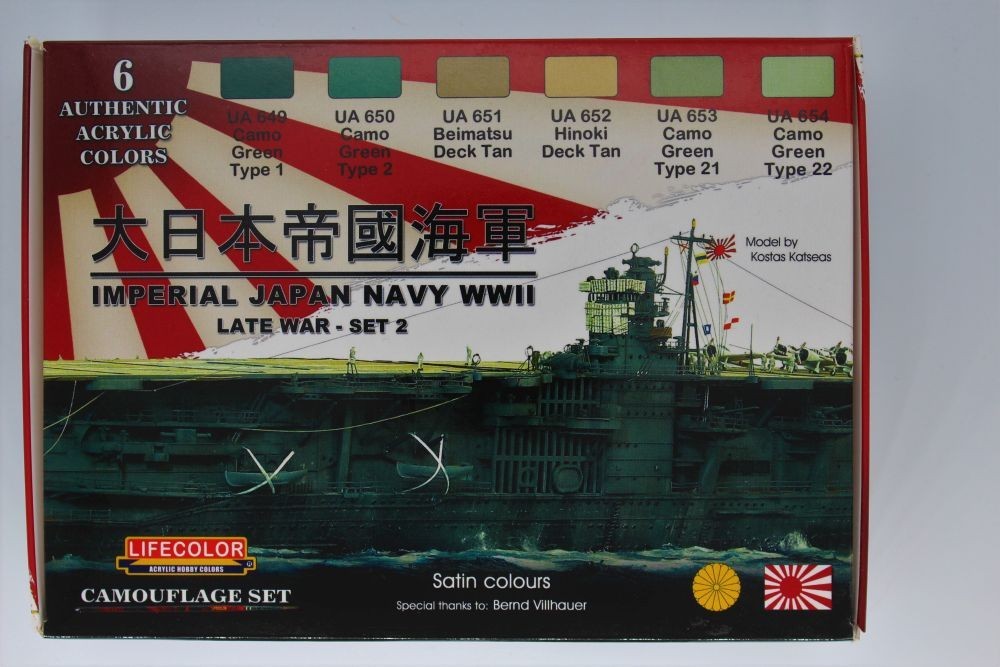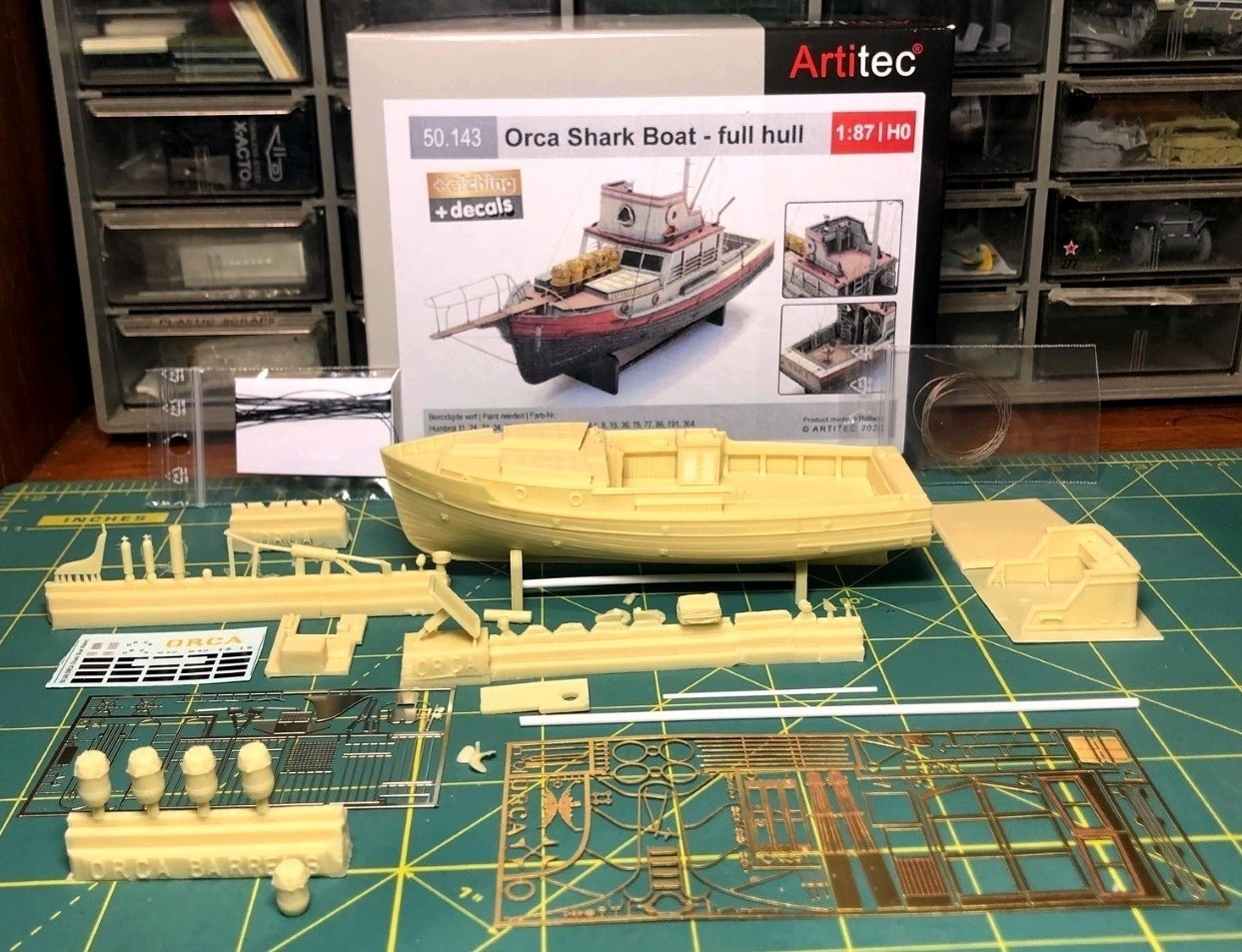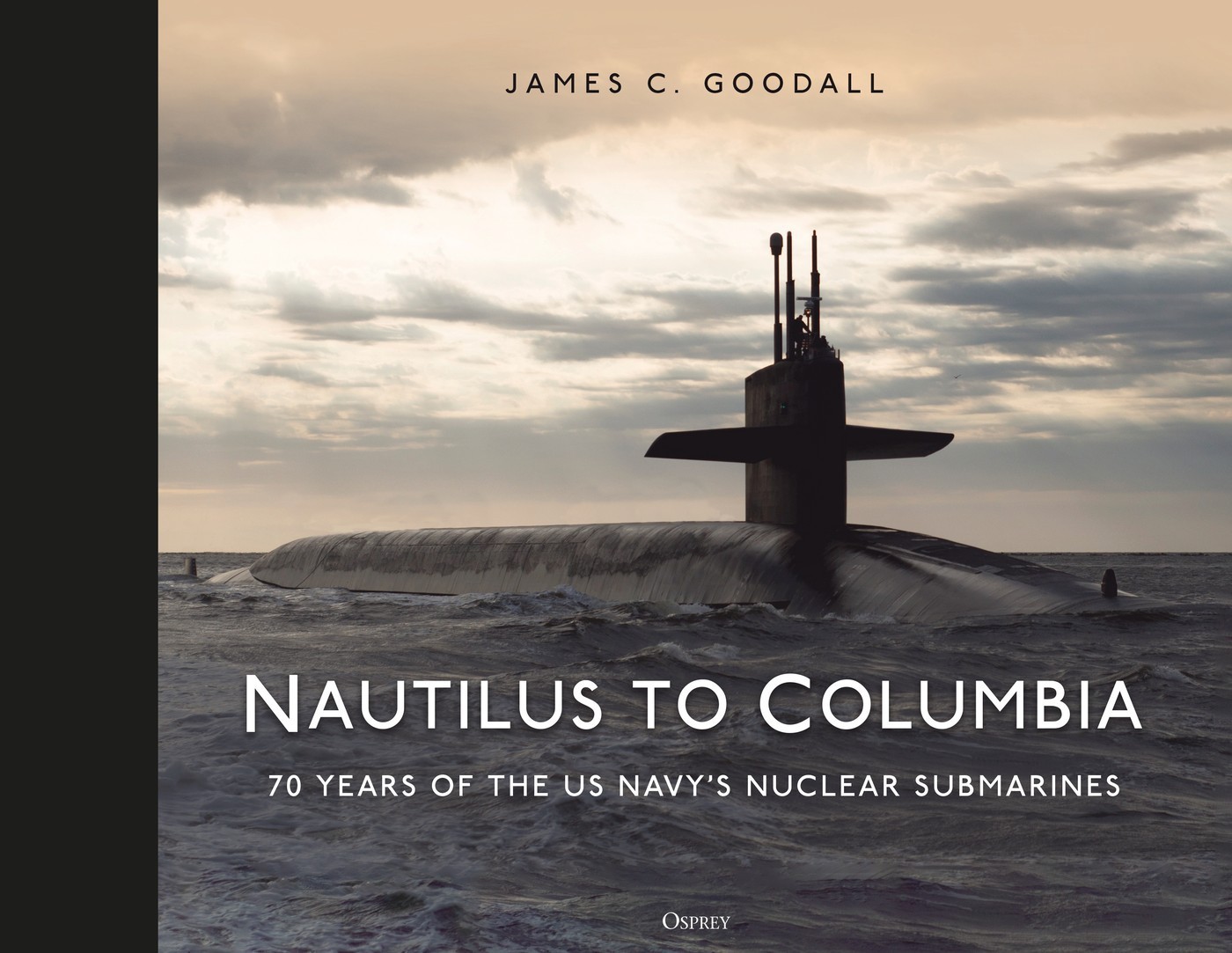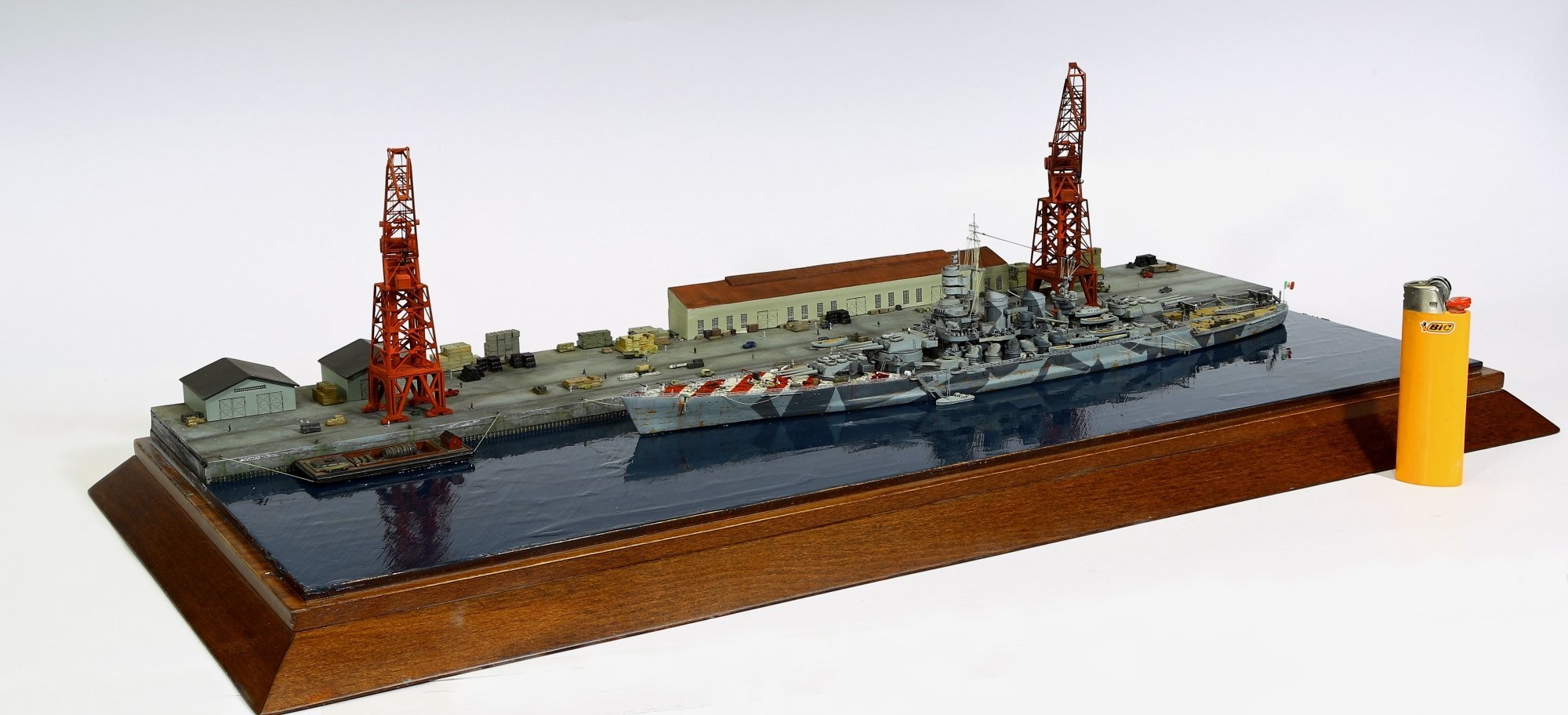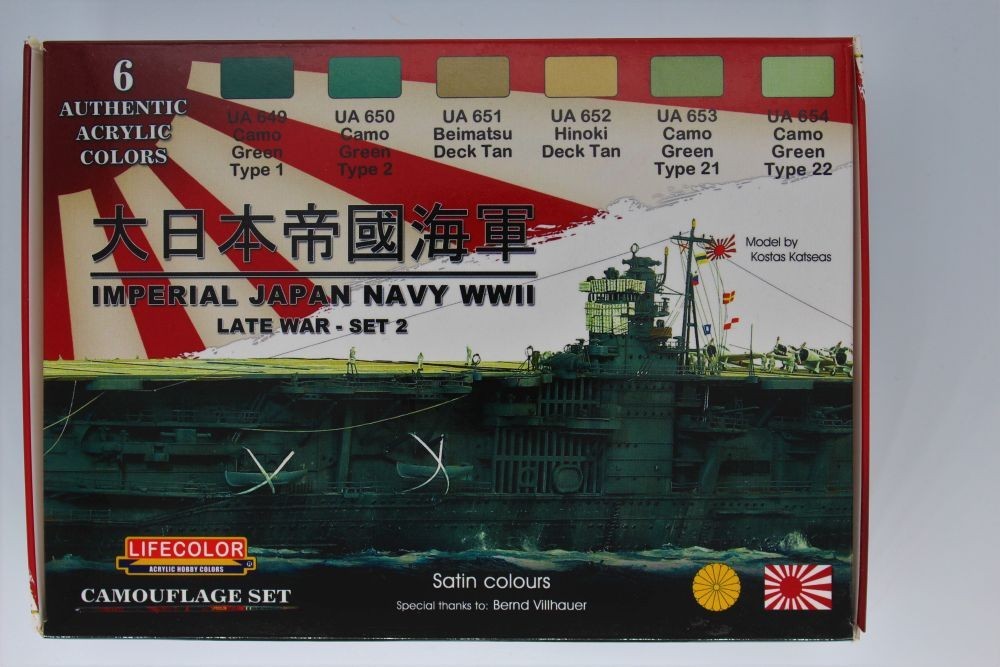
Imperial Japan Navy WWII Late War Set 2
IJN Late War Set 2 is set CS37. Airbrushes.com kindly provided this set and writes about LifeColor paints:
Water soluble acrylic colours for modelling and hobby. LifeColor is excellent for paint brushing or airbrushing on plastic, resin, metal, vinyl, wood, cloth and ceramic.
This is one of two sets for the Teikoku Kaigun (Imperial Navy, or IJN). The other is Imperial Japan Navy WWII Set 1, a set of IJN grays and reds. The colors of this review are for wood decks for aircraft carriers and other types of all eras, and mid- to late-war camouflage of the Mobile and Combined Fleets.
Imperial Japan's navy had four main shipyards: Sasebo; Kure; Yokosuka; Maizuru. Each had their own idea of what a warship gray color should look like. But as the fortunes changed and Teikoku Kaigun spent more time hiding and reconstituting, the IJN began painting some of their ships with green paints. In 1942 studies concluded that the best color of camouflage for Japanese aircraft over water was a dark green. Presumably, that was deemed effective for some ships as well. Even some battleships (Ise and Hyūga) were so painted.
This Set
LifeColor packs their sets in a good-looking flip-top box. Curiously, they chose the IJN Akagi as the box art for "late war" colors. Not completely wrong as Akagi had a wood deck for which this set contains colors. Inside are six 3/4 fl oz (22 ml) screw top bottles. There are no instructions other than as printed (in multiple languages) on the back of the box, plus six printed color chips. LifeColor reminds us that these can be mixed with their Tensocrom Medium to create washes and glazes. I very much appreciate that the bottle caps are molded with an internal rim, which both provides a small palette cup, as well as inhibits paint fouling the bottle and cap threads.
These paints are made with very fine ground pigments. LifeColor advertises that they have no noticeable odor, which I am not certain of that meaning unless it means there are no harmful solvents within. Generally, I find them to be thinner than other brands I am used to, almost like a heavy wash. The paints of this set seem to be formulated for airbrushing.
The six (6) satin colors of this set are:
• UA 649 Camo Green Type 1 (Hull color)
• UA 650 Camo Green Type 2 (Hull color)
• UA 651 Beimatsu Deck Tan
• UA 652 Hinoki Deck Tan
• UA 653 Camo Green Type 21 (Deck camouflage color)
• UA 654 Camo Green Type 22 (Deck camouflage color)
Modelers pine to know of the correct wood used on IJN carriers. In 1942, some American fliers remarked about “yellow” Japanese carrier decks. At Midway some described the decks as highly visible and ranging from yellowish to a warm brown. Speculation often chooses teak although many point out that teak was expensive even then. Teak ranges from a golden to medium brown, darkening with age. Hinoki Deck Tan dries with a yellow tinge. Beimatsu is the common Douglas fir; Hinoki is a Japanese cypress. Both are plentiful in Japan, very resistant to rot and moisture, and durable. Smaller IJN ships had linoleum on their decks and that color is in the other set.
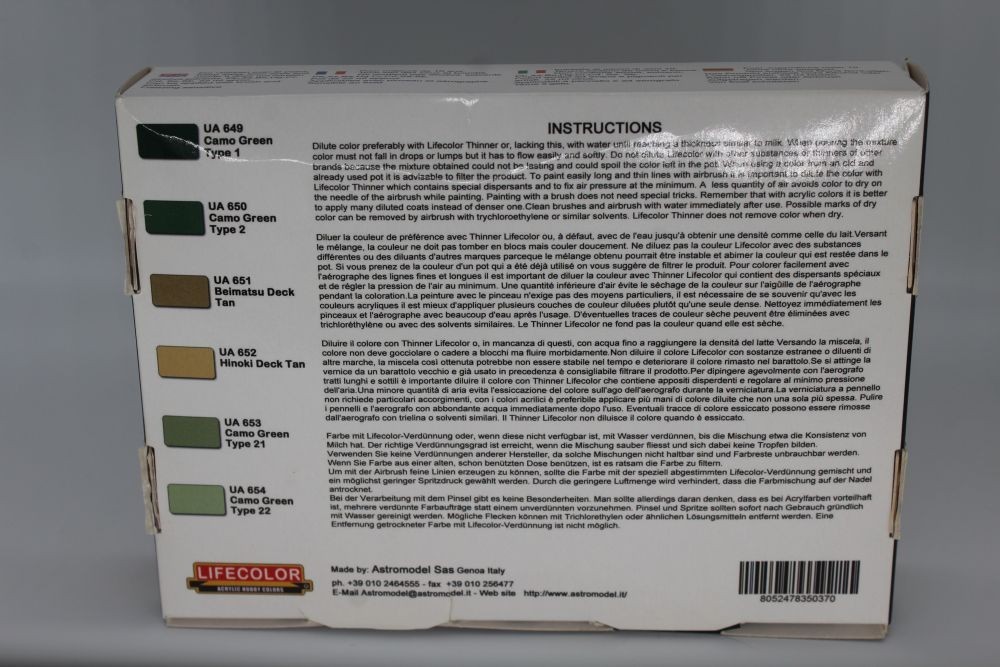
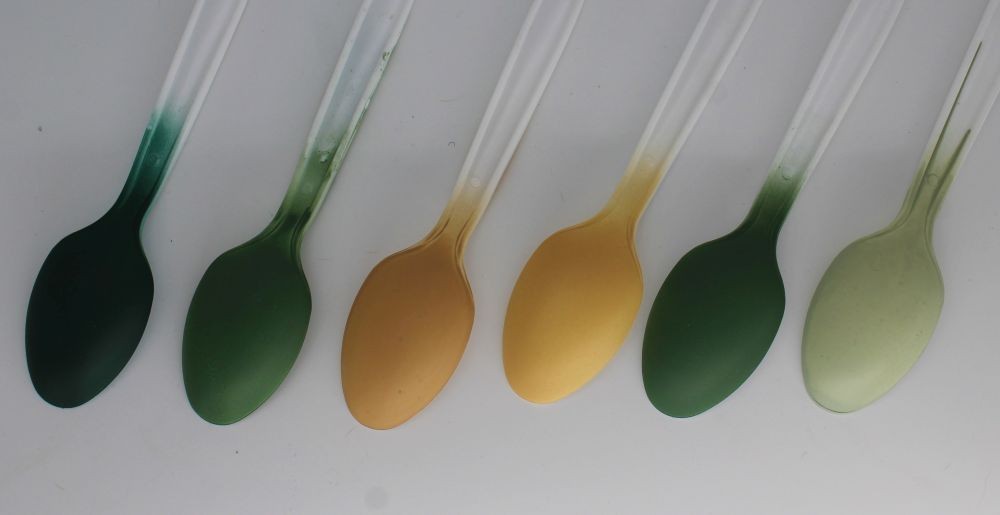
UA 649 Camo Green Type 1
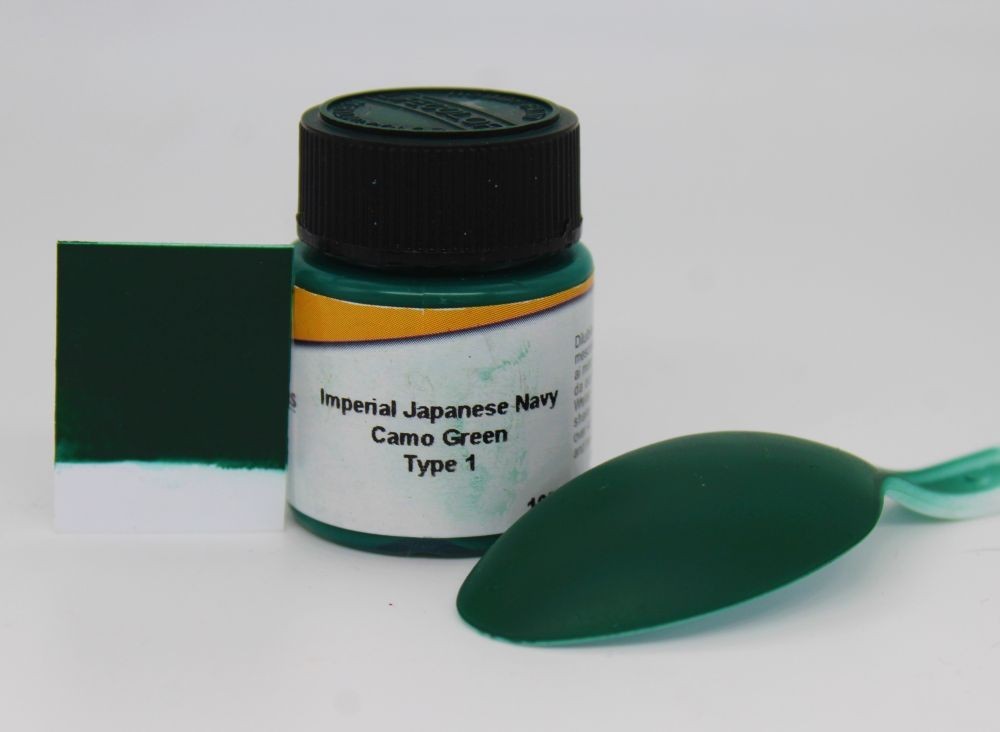
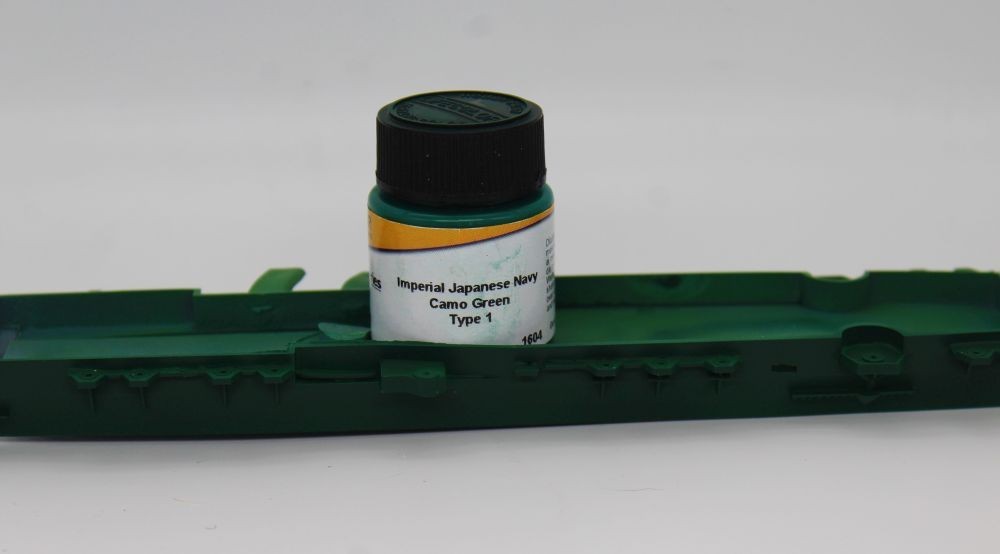
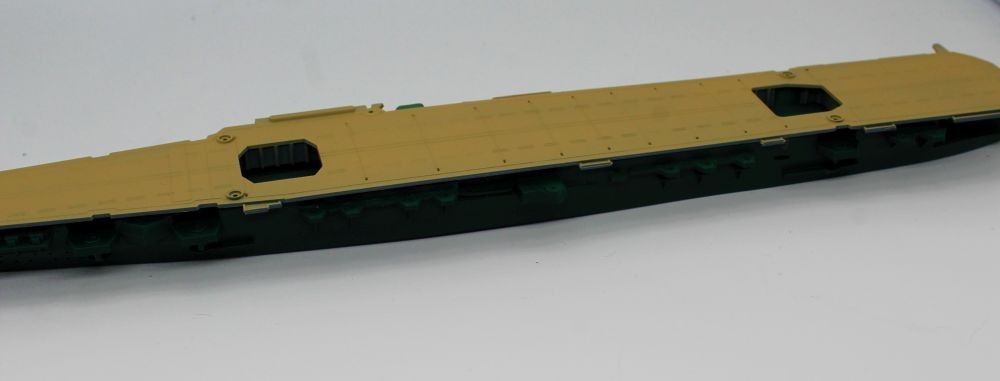
UA 650 Camo Green Type 2
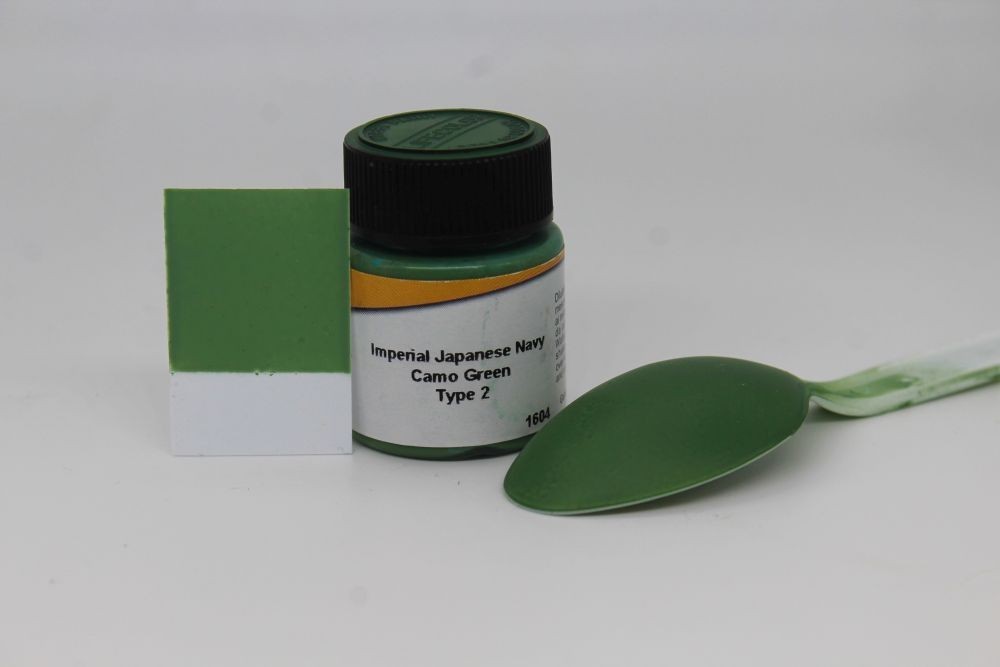
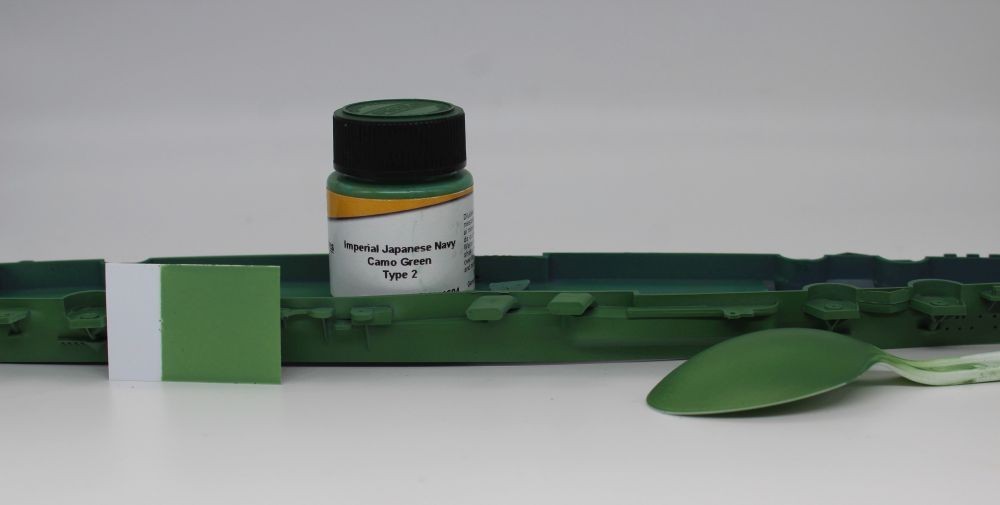
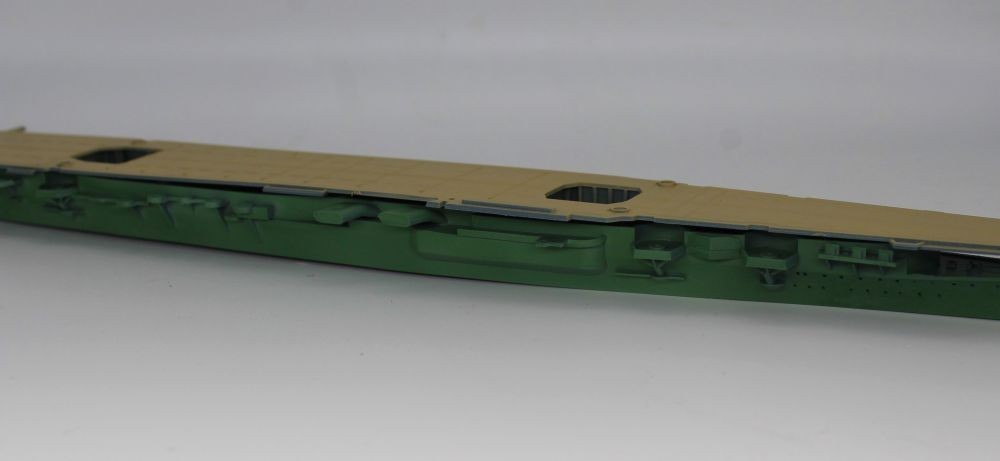
UA 651 Beimatsu Deck Tan
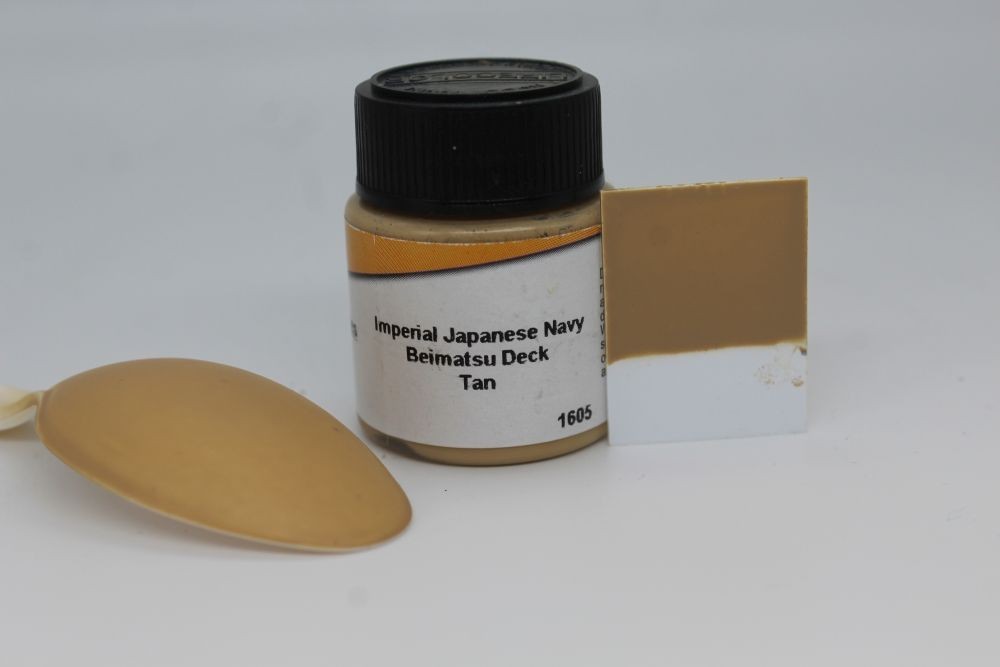
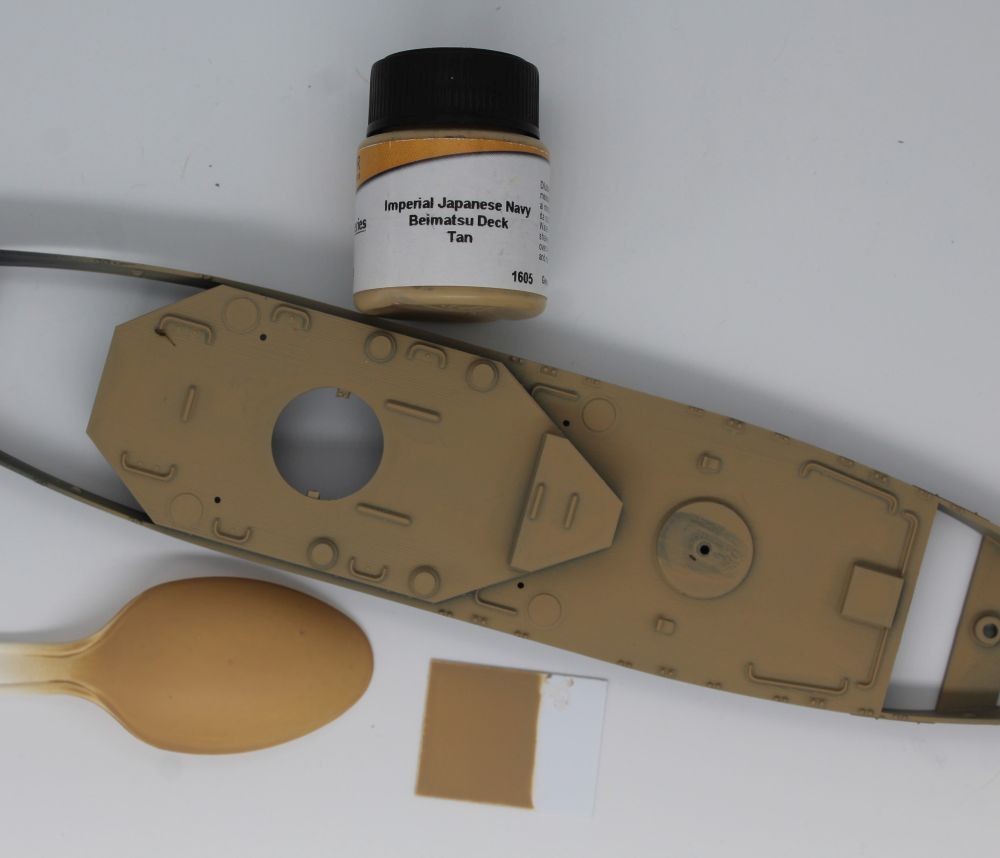
UA 652 Hinoki Deck Tan
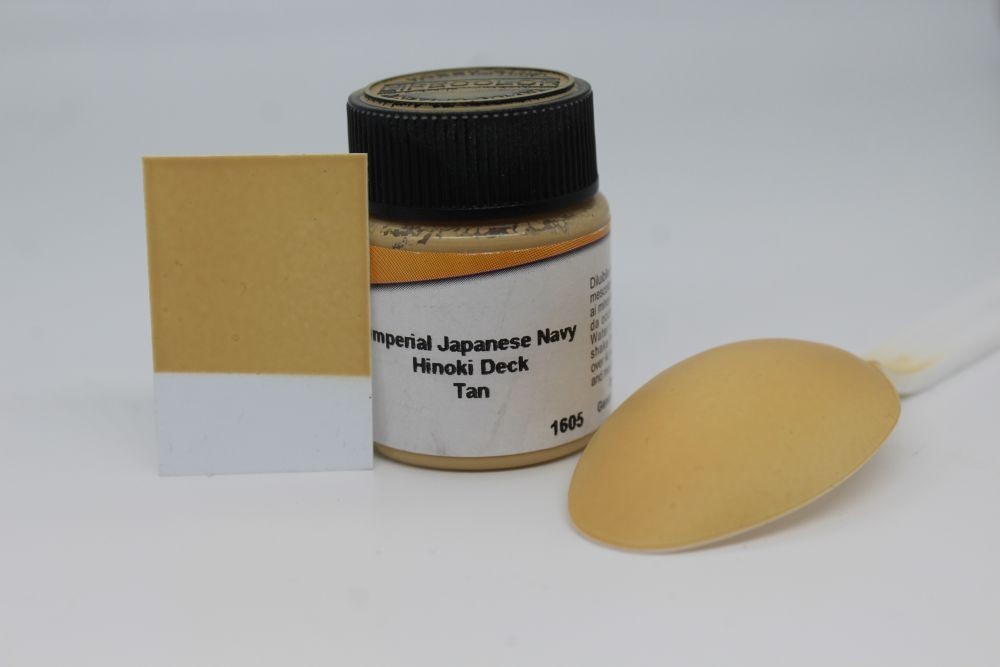
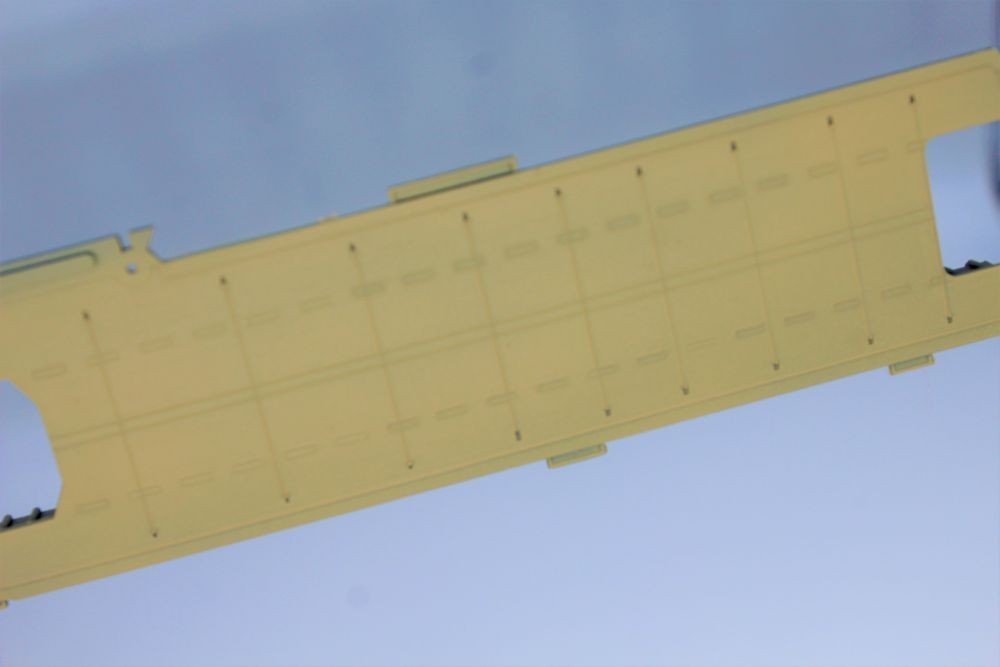
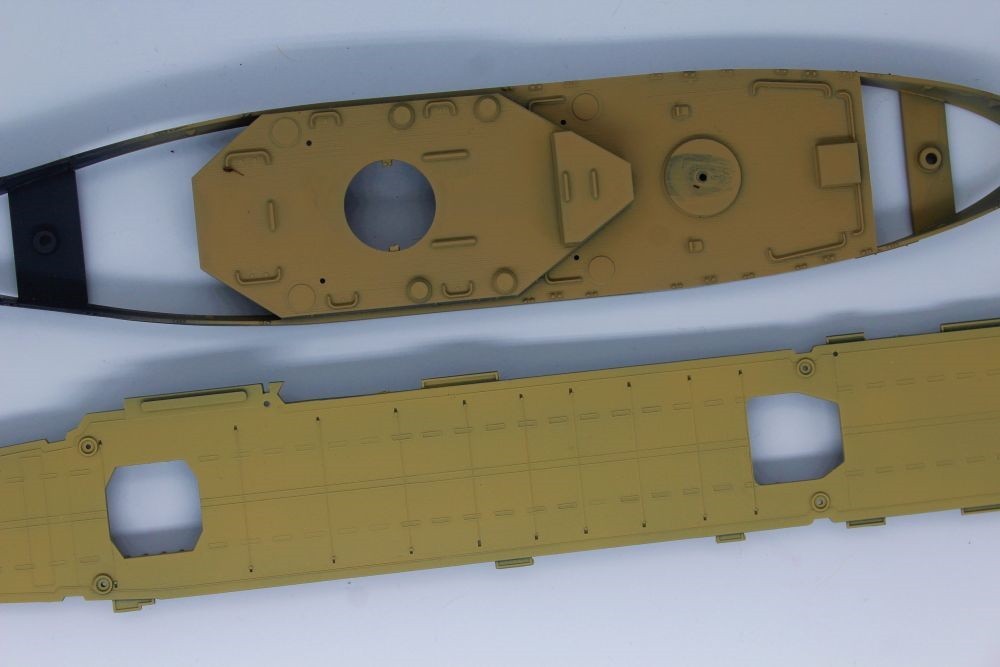
UA 653 Camo Green Type 21
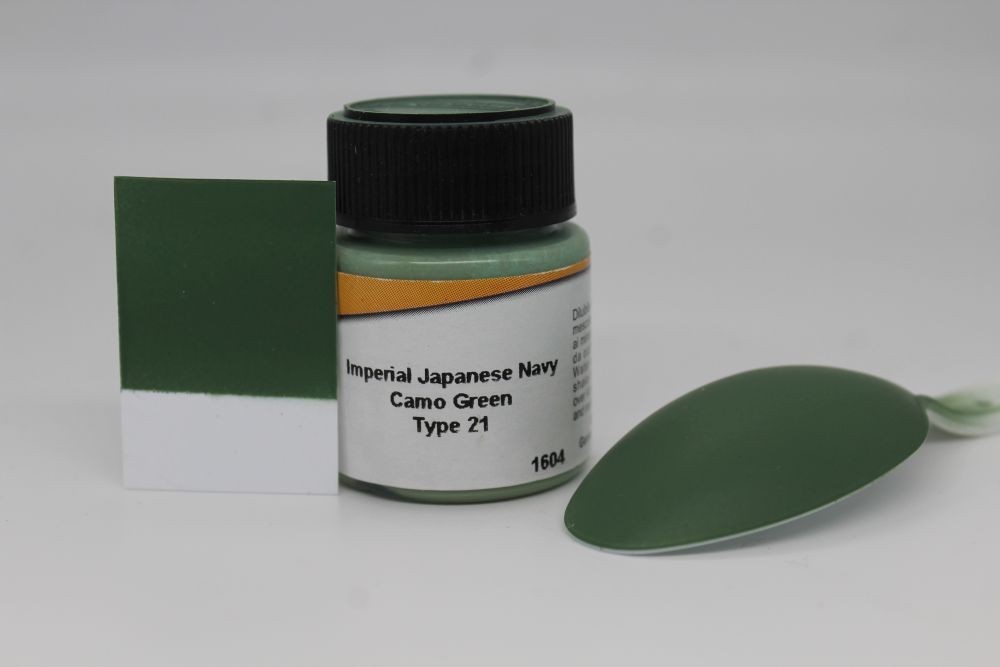
UA 654 Camo Green Type 22
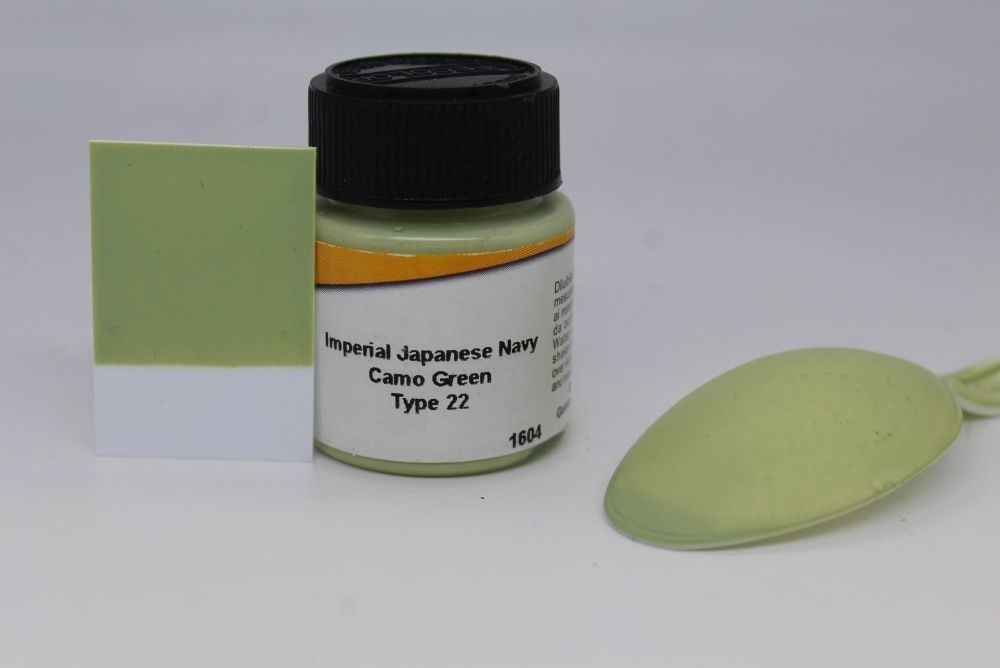
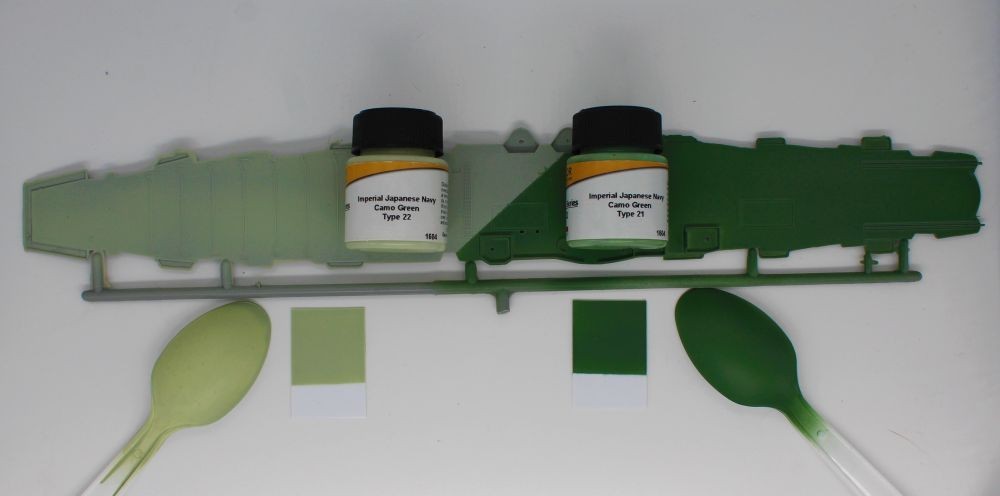
Use
Before use I gave each bottle a good stir to mix it before making each color sample.
I only airbrushed this set. LifeColor recommends low pressure but I used 20 psi, shooting the paint through my Aztek with a white nozzle. Four of these colors are very thin but three required thinning. All sprayed smooth and all but two covered with one coat.
Camo Green Type 1 took a 1/3 ratio of thinner to paint; required two coats.
Camo Green Type 2 sprayed well from the bottle.
Beimatsu Deck Tan was thinned 1/5; required two coats.
Hinoki Deck Tan was thinned 1/5.
Camo Green Type 21 was thinned 1/5.
Camo Green Type 22 sprayed well from the bottle.
Most dried sateen as advertised but some look matte to me. Camo Green Type 21 dried matte on the sample swatches but smooth and almost shiny on the demonstration model deck. I believe that is because I thinned it before spraying upon the deck.
Three paint colors cleaned out of the airbrush completely with tap water. Just to be certain, I chased them with a cup full of airbrush cleaner. Three colors required cleaners, and Camo Green Type 1 left a glob of goo in the water.
The paints, airbrush equipment, and demonstration surfaces were used in a 58°-65°F basement. After curing 24 hours at approximately 65°F and 55-60% humidity, I scratched a fingernail across the cured chips. No paint scratched off expect for Beimatsu Deck Tan, which still seemed a bit tacky to the touch.
Conclusion
With this set of LifeColor paints, one can replicate the wood decks and the unique green camouflage of Japanese ships. I am happy Imperial Japan Navy WWII Set 2 contains the yellowish deck color. I am again impressed with the easy of use of these paints. Airbrush performance is excellent. Except for Type 1 requiring heavy thinning and yet requiring multiple coats, I have no complaints. Adhesion and durability are excellent! The bottle design is great.
LifeColor have created another excellent set for modelers of Imperial Japanese warships. I happily recommend it.
Please remember to mention to LifeColor and Airbrushes.com that you saw this product here – on Model Shipwrights.










